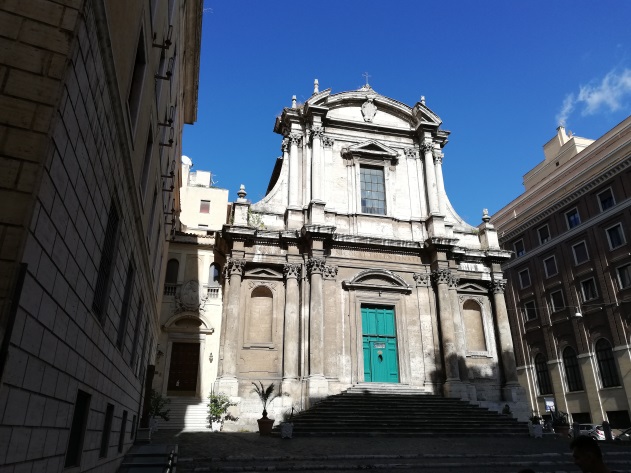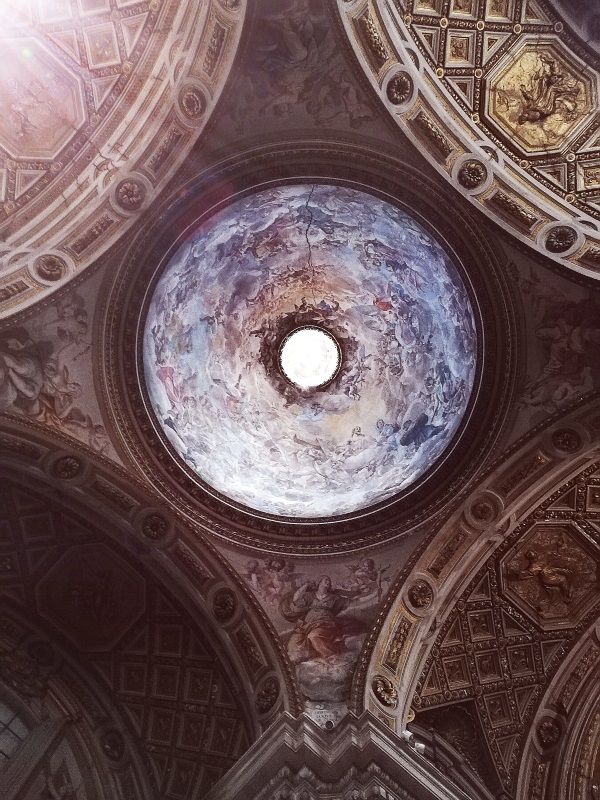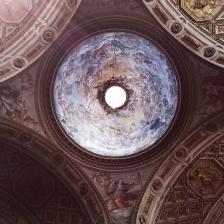

Located in the Rione Trevi, on the ascent of the same name, the Church of San Nicola da Tolentino was erected, among vineyards and gardens, on the orders of Pope Clement VIII in 1599, to host the novices of the newly born Ordine degli Agostiniani Scalzi.
In 1620, the Augustinian monks commissioned an extension of the church to the architect Carlo Buti but, due to the scarce financial resources, the works proceeded slowly. It was thanks to Prince Camillo Pamphilj, following a vow made for his wife Olimpia Aldobrandini to recover, that the works received a new impulse, entrusted first to the architect Alessandro Algardi and then to his pupil Giovanni Maria Baratta. The construction ended in 1654.
The imposing Baroque façade, built by Francesco Buzio in 1670, together with the wide staircase on which it stands, is of great visual impact, and can be specially admired coming from Piazza Barberini. Two niches, placed at the sides of the portal, hold the Pamphilj Family crest, represented by doves carrying an olive branch in their beaks.
The interior, with a Latin cross plan and a single nave, is large and solemn and is richly decorated with polychrome marbles and frescoes dating back to the 17th century. The refined Cappella Gavotti, the second on the left, is one of the masterpieces of the Roman Baroque and the last architectural work by Pietro da Cortona, in 1668.
The dome is divided into eight sections and culminates with an elegant lantern. In 1643 the painter Pietro Paolo Ubaldini decorated its squinch arches with four female figures, flanked by little angels, that allude to the four basic rules of the Augustinian order: Chastity, Humility, Poverty and Obedience. The large fresco of the dome, instead, was made by Giovanni Coli and Filippo Gherardi in 1671 and depicts the Glory of San Nicola da Tolentino.
In a niche by the main altar stands the sculptural group depicting the Vision of San Nicola da Tolentino with the Virgin, Sant’Agostino and Santa Monica. According to legend, San Nicola, seriously ill, invoked the Virgin Mary who appeared to him together with Saints Augustine and Monica offering blessed bread.
To celebrate this miracle, the Augustinians used to distribute small blessed loaves, the "San Nicola Bread", which had the power to heal various diseases.
Following the donation of Pope Leo XIII to the Pontificio Collegio Armeno in 1883, San Nicola da Tolentino became the official church of the Armenian community of Rome.
The Pontificio Collegio Germanico-Ungarico, on the right side of the church, hosts students from Germany, Switzerland, Austria. In the 19th century, the populace used to call them "gamberi cotti" (cooked prawns) for the red robe they wore.
Information
For the timetable of the masses and visiting conditions, please consult the contacts.
 Condividi
Condividi
Location
To find out about all accessibility services, visit the Rome accessible section.












































